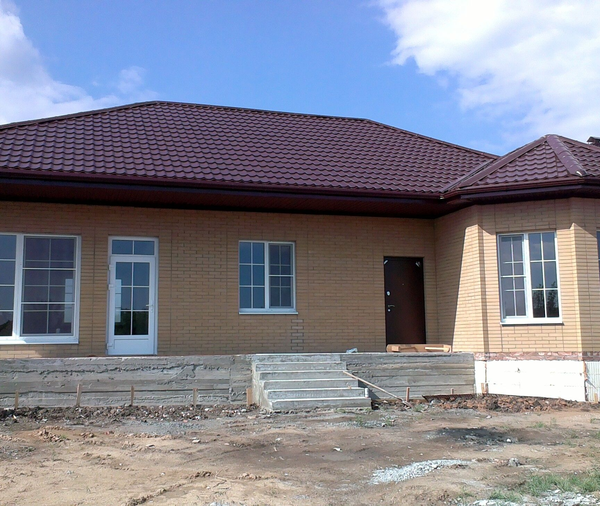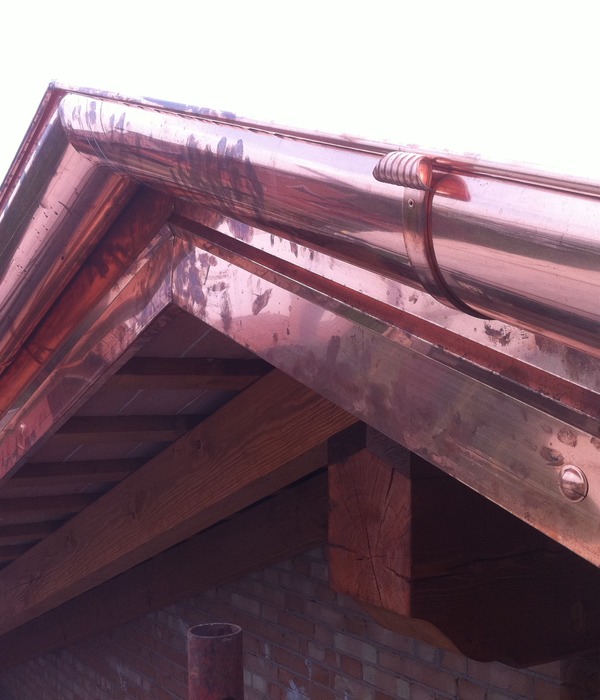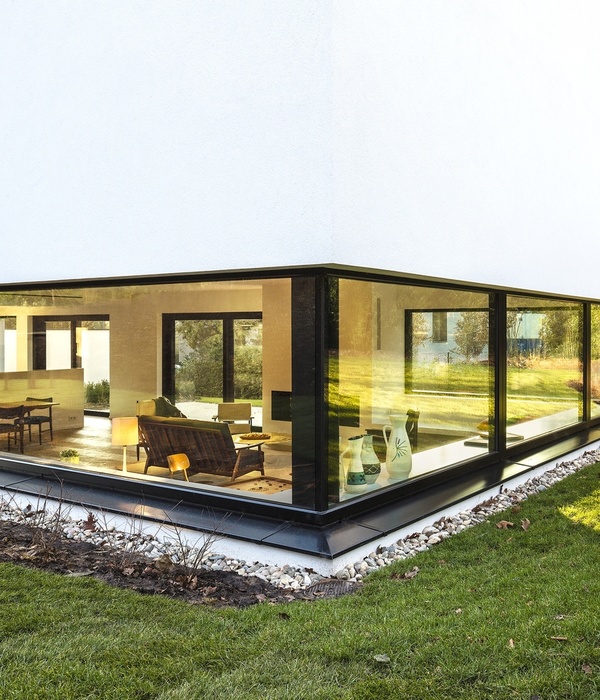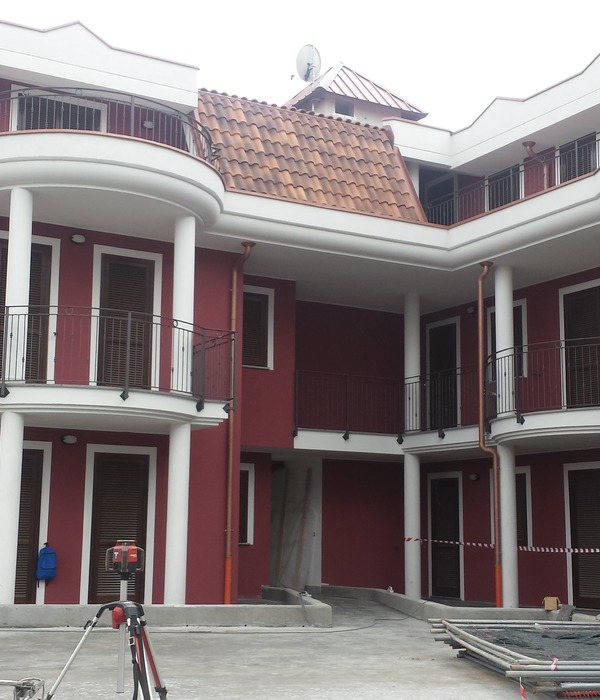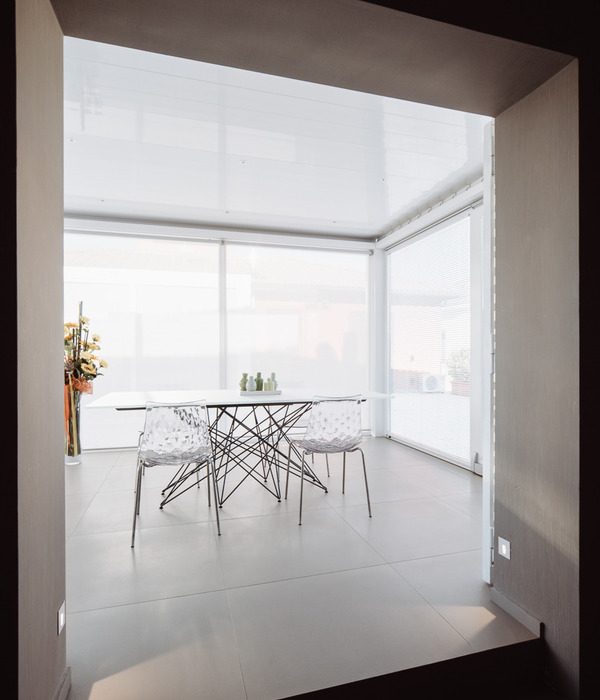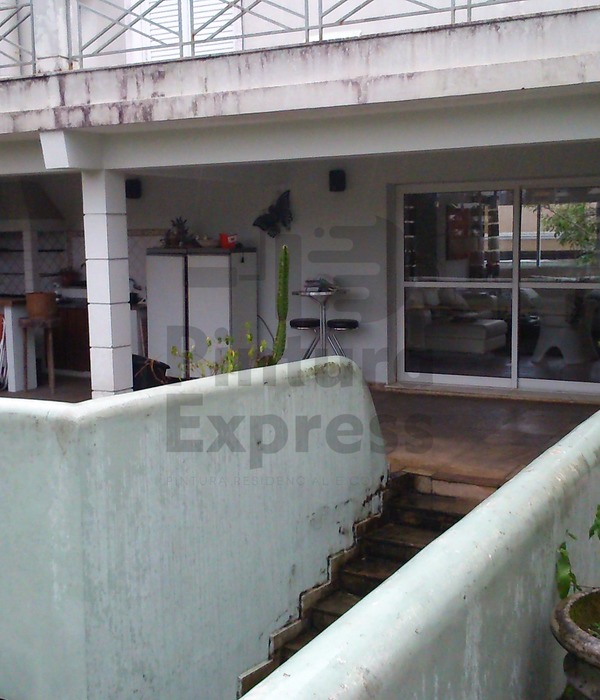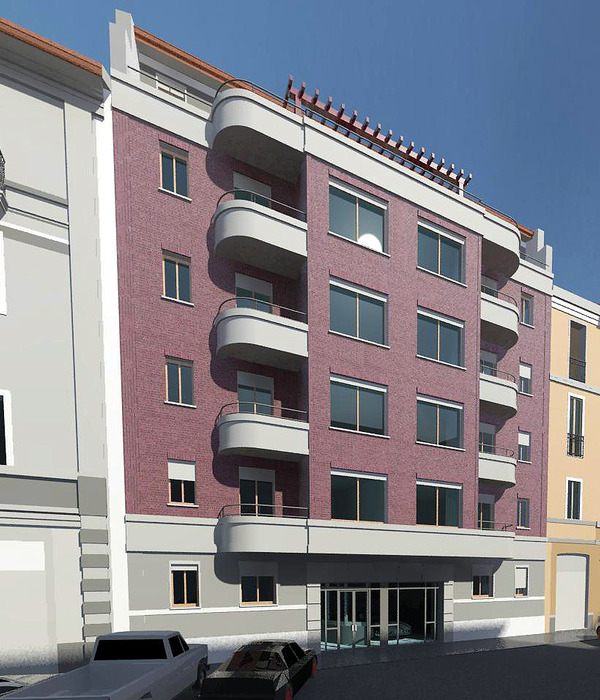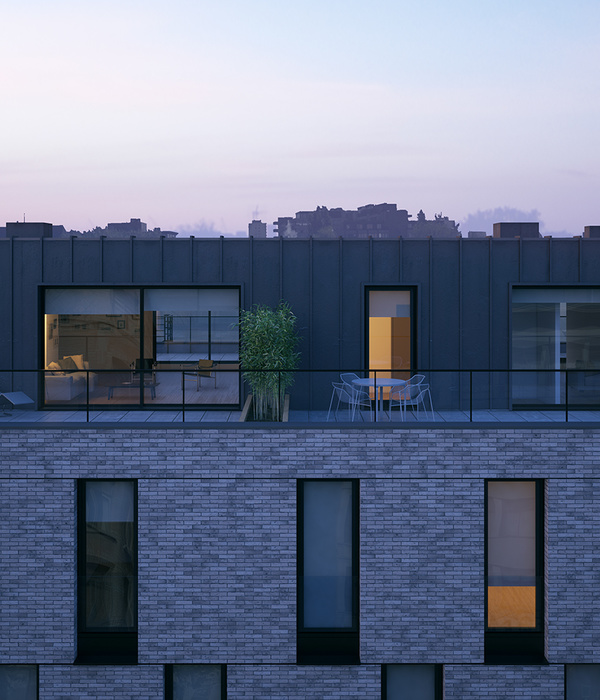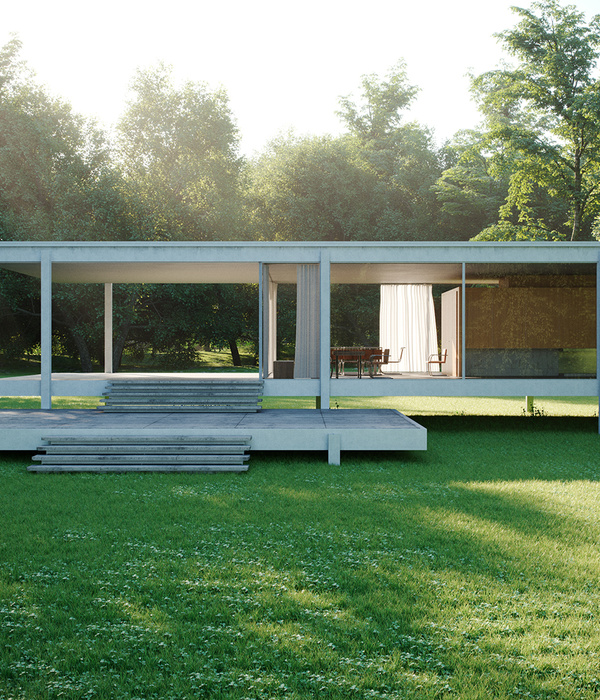基地位于大阪郊区工厂、仓库和独立住宅的混合区域。其中橙色瓦顶的单层小屋中住着年轻的五口之家。小屋南侧是大花园,二者占比约为1:8。一家人幸福地生活在拥挤的屋檐下,室外留有大面积空地。他们想要离开现有住宅,在空地上建造新的家。
The site is located in a mixture of factories / warehouses and detached houses in the suburbs of Osaka. There was a young family of 5 people living in a small one-story house with an orange tiled roof. A large garden spread out on the south side, and the relationship between the house and the garden was about 1: 8. The family lived happily shoulder to shoulder under a small roof, and there was a generous abundance outside. The plan required a new home in the open space, leaving the existing home.
▼项目顶视图,top view of the project © Yohei Sasakura
▼项目鸟瞰,aerial view of the project © Yohei Sasakura
▼项目外观,external view of the project © Yohei Sasakura
▼背立面,rear facade © Yohei Sasakura
▼周边环境,surrounding environment © Yohei Sasakura
新家与花园成一定角度布置,房间、屋檐和花园彼此靠近,从而形成适宜的尺度。柱子和梁形成“イ”形屋檐,屋檐随着内侧房间变小而逐渐变大。儿童房布局紧凑,配有与房间相连的木平台,东西两侧视野均延伸至花园。长桌位于房屋中心、贯穿室内外,居住者可以在其内侧读书、外侧用餐,在来往之间,生活充满活力。随着人的移动,檐下空间打破了室内外的边界。花园南侧和西侧存在缓坡,设计师没有对其进行特殊的改造,而是保留了坡地上自由生长的植被。随着屋檐的变化,室内的柱子、梁结构材料及胶合板与室外的植被之间的距离、生活与环境的关系变得更加紧密。
▼剖透视图,sectional perspective © Office for Environment Architecture
The required room was arranged at an angle to the garden, and the room, the eaves, and the garden were brought close to each other so that the ratio was the same. The eaves, which are created to shape “イ” with pillars and beams, become larger as the room becomes smaller. The small packed children’s room has a large deck built into the room, and the view extends to the gardens in both the east and west directions. The table, which is located in the center of the house and penetrates inside and outside, gives movement to life by going back and forth between inside and outside, such as reading books inside and eating outside. As people move, a place is created under the rectangular roof beyond the boundary between the inside and outside. The site was a depression with small slopes on the south and west sides. This time, rather than making the garden with special modifications, the vegetation that grew freely on the slope was used as it was. By changing with the eaves the distance between the inside of the pillars, beam structural materials, and plywood, and the outside of the vegetation, the relationship between life and the environment became as close as possible.
▼房间、屋檐和花园彼此靠近,the room, the eaves, and the garden are close to each other © Yohei Sasakura
▼正立面,main facade © Yohei Sasakura
▼单坡屋顶,single-slope roof © Yohei Sasakura
▼屋檐向南逐渐变大 © Yohei Sasakura the eaves gradually becomes larger to the south
▼起居空间,living space © Yohei Sasakura
▼餐厅与厨房,dining and kitchen © Yohei Sasakura
▼厨房面向花园,the kitchen faces the garden © Yohei Sasakura
▼长桌贯通室内外,the table penetrates inside and outside © Yohei Sasakura
▼长桌内侧,inside view © Yohei Sasakura
▼近景,closer view © Yohei Sasakura
▼大面积玻璃采光,large glass lighting © Yohei Sasakura
▼儿童房,children’s room © Yohei Sasakura
▼两侧均面向花园,both sides face the garden © Yohei Sasakura
▼夹层空间,mezzanine space © Yohei Sasakura
▼檐下空间,space under the eaves © Yohei Sasakura
设计师积极地对待原有环境,使建筑后退一步。室内外的关系可以对日后建筑框架长达数十年的建造起到推动作用。设计师在尽可能保留原有环境丰富性的情况下,提出了在室内、屋檐下以及室外空间度过时光的多种方式。
Take a positive view of the original environment and take a step back about architecture. Since the structure created there as a frame will continue to be built for decades, the relationship between the inside and outside can play a complementary role. We proposed a diverse way of spending time inside, under the eaves, and outside, while preserving the richness of the existing environment as much as possible.
▼檐下空间夜景,night view of the space under the eaves © Yohei Sasakura
▼立面夜景,night view of the main facade © Yohei Sasakura
▼区位图,location © Office for Environment Architecture
▼“イ”形屋檐,“イ” shaped eaves © Office for Environment Architecture
{{item.text_origin}}

